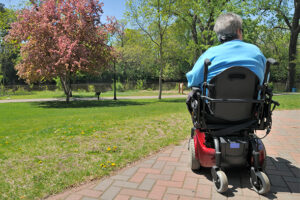Neurology
Multiple Sclerosis
Real-World Effectiveness of First-line Treatment in Relapsing-Remitting Multiple Sclerosis
Overview
Data from pivotal trials and evidence from real-world observational studies are often complementary. Our featured expert notes the importance of examining both types of evidence together when considering the optimal use of disease-modifying therapy (DMT) in patients with relapsing-remitting multiple sclerosis (RRMS).
Expert Commentary
Robert A. Bermel, MD, MBA
|
|
“I would keep the perspective that we are moving the needle at the population level, meaning that very important advances in DMT influence the natural history of MS.”
The availability of evidence from pivotal phase 3 trials complemented by real-world observational studies has been an important advance in how we learn to appropriately use DMT in patients with RRMS. Pivotal studies are somewhat of an artificial setup because the patients in those trials are highly selected. Often, those with certain comorbidities or patients of certain ages are excluded from pivotal trials. Further, clinical studies often have short follow-up protocols, and we do not know how adherence in the real world influences the efficacy of our medicines. So, real-world observational studies can help supplement the evidence from pivotal phase 3 trials, and it is important to look at both types of evidence together.
For example, we can obtain information such as long-term follow-up data from real-world studies, which may not be available from phase 3 trials. These findings allow us to ask: Have we changed the course of the disease? When patients are taking first-line medications long-term, have we really moved the needle? And the answer to both is yes. When you consider 2 groups of patients (1 group that perhaps took first-line therapies for MS and the other group that did not take any therapy) and follow them for multiple years, this would be a pseudorandomization in a retrospective design and is called a propensity score analysis. This type of analysis has shown that we actually do move the needle and that treatment with first-line DMT really does influence the long-term risk of Expanded Disability Status Scale score progression in patients with RRMS. When we talk about first-line DMT, I would keep the perspective that we are moving the needle at the population level, meaning that very important advances in DMT influence the natural history of MS.
At the individual patient level, we must recognize that treatment failure or breakthrough disease is relatively common in patients on first-line DMT, and, therefore, it is quite important to monitor these patients closely, both clinically and with magnetic resonance imaging, as well as to monitor them for adherence. And when we recognize breakthrough disease, it is important to act quickly. Efficacy from phase 3 trials does not always translate to the real world, as noted by Souza and colleagues, and factors associated with shorter time to failure in that study included female gender, the earlier period of time (ie, patients being enrolled from 2000-2003), and having comorbidities at baseline.
Many patients will choose first-line therapies because of their time-tested safety track record and our long-term experience with them, and this gives them a place in the armamentarium. With multiple available therapies beyond just the first-line agents, we have become quite demanding in our expectations regarding the efficacy of these treatments. As stated, we should monitor patients closely for relapse and new lesions with imaging and clinical care, and we should consider switching therapies in those with breakthrough disease.
References
Kern DM, Cepeda MS. Treatment patterns and comorbid burden of patients newly diagnosed with multiple sclerosis in the United States. BMC Neurol. 2020;20(1):296. doi:10.1186/s12883-020-01882-2
Souza KM, Diniz IM, Pires de Lemos LL, et al. Effectiveness of first-line treatment for relapsing-remitting multiple sclerosis in Brazil: a 16-year non-concurrent cohort study. PLoS One. 2020;15(9):e0238476. doi:10.1371/journal.pone.0238476











